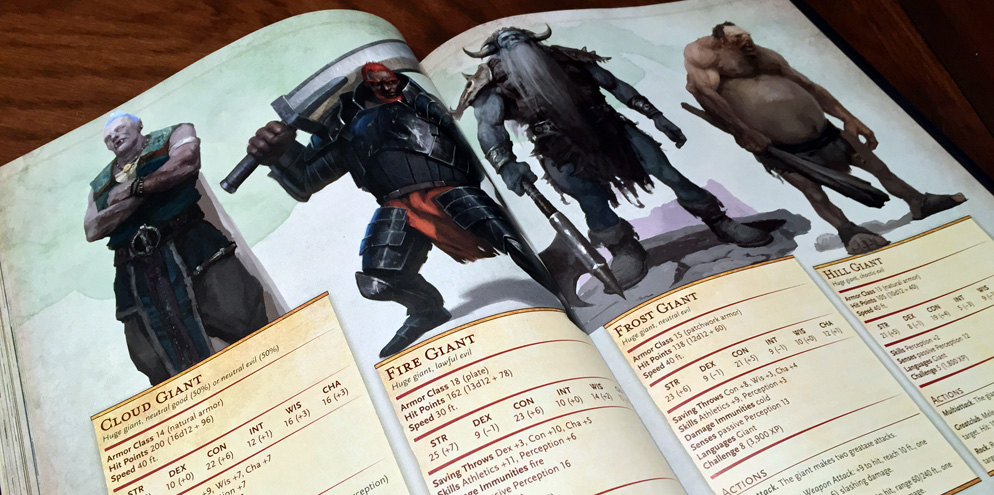As always, you can find all the posts in this series by clicking here.
This week’s blog post is going to cover a small, but important location in the setting. But before I get to that – after months of writing these posts, I have finally settled on a name for the world: Exadria. You’d think I’d have come up with a name for the world back at the beginning of this process, but one just was not coming. That’s not nearly as interesting as the main part of this blog post, however, so let’s get on to The Iron Tree.
Roots of Steel, Leaves of Copper
The Iron Tree is exactly what it sounds like: a living tree made of iron with copper leaves and a steel root system. It grows in a remote spot at the foot of Xavidar mountains where the salt flats of Sadrogia meet the ancient ash fields from the extinct volcano that is Mount Tethrum. It is, as far as anyone knows, the only tree of its kind in the entire world. Attempts to plant or cultivate its metallic fruit have been futile, as have occasional attempts to destroy the tree itself. Even if it is torn out by the roots, it eventually regrows in the same place. The tree doesn’t look all that remarkable at a glance – the black iron trunk has a dull finish and roughly the same texture as normal tree bark, and the copper leaves have a green patina which makes them look like normal leaves unless examined closely. It stands about 40 feet tall and looks very much like a normal coniferous tree in a lot of respects.
The tree itself has a few noteworthy properties. It always attracts lightning strikes in the area, though this may have more to do with being a 40-foot high object made of metal than any magical property of the tree. It requires no water to grow, and the soil it grows from is a mix of salt flat and volcanic ash, and while the volcanic component is highly fertile, the salt makes it completely inhospitable to any other plant life. And, as previously mentioned, if damaged or destroyed, it always grows back. Feeding the tree metal seems to stimulate its growth, and the tree is currently the largest it’s ever been as far as any historical record knows.
But by far the most remarkable thing about the tree is the fruit it provides.
Hanging from the branches of the iron tree are a number of pomegranate-sized (and shaped) fruits made of metal. The metal itself varies from fruit to fruit, and certain types of fruit can be “encouraged” by burying metal objects in the root system of the tree. Over time, the objects are absorbed by the tree, any magical effects on them are negated, and the metal from them eventually falls as fruit. The Iron Tree is utterly implacable in its consumption of metal in the soil around it – powerful artifacts have been destroyed by giving them to the tree. In addition, the tree is completely unfazed by the nature of the items buried in its soil. Corrupted swords of pure evil or holy relics from ancient cathedrals have been absorbed as blithely by the tree as piles of scrap bronze and old iron horseshoes. However, powerful magical items take longer to be absorbed by the tree than simple nails and dinnerware. An ancient artifact may take centuries to be consumed by the tree and turned into fruit, though after 24 hours or so there’s a significant measure of security provided by the tree’s steel roots which will wrap around the object in a loose “cage,” slowly tightening and expanding around the object to completely envelop it by the time it’s been buried for a year. The fruit resulting from alloys is always a “pure” metal; for example, bronze items buried in the soil around the tree will eventually produce copper and tin fruit. Multiple fruits can be combined to make alloys as usual and the results are always excellent, unless one of the fruits was pried off the tree before its time. (See below.)
When one of the fruits from The Iron Tree falls to earth, it can be forged into any number of objects (depending on its composition) and whatever is made from a fruit of the iron tree is automatically of superior quality and also takes enchantments exceptionally well. The metal from its fruit is a joy to work with, and almost seems to want to help the craftsman. A number of legendary weapons, suits of armor, ceremonial objects, precision instruments, and other important items, including a significant number of artifacts, began their existence as a fruit from The Iron Tree. The fruit cannot be plucked early – anything made from fruit that is pried off the tree before it is “ripened” never seems to turn out right. The metal is always pitted and brittle, corrodes easily, and is especially susceptible to metal fatigue. Even trying to make simple things like nails or eating utensils turns out poorly. Returning items from “bad fruit” to the soil around the tree’s roots allows the metal to be absorbed again with no ill effects, and it will eventually form another piece of fruit, no worse for the wear.
In addition, a piece of fruit can be added to a larger volume of ordinary metal of the same type or a type that can be alloyed with it and many of the same benefits will be conferred, albeit at a lower intensity. However, even a little of the metal from a pried-off piece of fruit will spoil the entire batch. Legends of warriors taking a small bud from the tree and throwing it into the forge of an enemy army as an act of sabotage exist in the world, though the most recent ones are ancient.
Leaves and branches taken from the tree are ordinary copper and iron, respectively (the steel roots seem to be a direct result of the high carbon content in the soil and are also ordinary if separated from the tree). The exceptions to this rule are those that fall from the tree after a lightning strike. Those leaves and branches are especially useful in applications involving electricity, from weapons that do lightning damage to electrical wiring.
An Important Place
As one would expect, the Iron Tree is seen as a priceless and important treasure, and the tree itself and the area around it have been claimed by The Church. For centuries, the tree was watched over by the order of St. Kylah, but in recent years, they have been joined by the order of St. Basdav. (Both orders are detailed here.) The Kylans provide security (often armed with weapons and armor made from the gifts of the tree) and the Basdavites oversee the metal put into the tree’s roots and experiment with applications for its fruit. The grounds of the tree include barracks, an R&D facility, some comfortable general living quarters, and a small, modest chapel decorated with fallen branches from the tree. Both orders are careful to select only the most trustworthy and vigilant members, as fruit (fallen or pried) from the tree could be used for any number of nefarious purposes.
One thing that the Basdavites have started to do in recent years is dumping shavings and filings of rare and valuable metals like Adamantine and Mithral into the roots, and some small fruits of those metals have been observed slowly growing on the upper branches.
As one might imagine, the fruit, regardless of its composition, is incredibly expensive and not provided to just anyone, regardless of what they can pay, and enough metal (typically a single fruit) to forge a sword from is a rare and highly-prestigious gift; a great honor in addition to being an exceptional material. The church has sold or given a limited amount of the fruit to certain trustworthy third parties, however. For example, the MSEA has some of the fruit which has been used in various prototype applications and The Palace of the Seers has a number of instruments for scrying that were made from the tree’s fruit in its halls.
Rules and Mechanics
Attempts to forge, cast, or otherwise shape the (fallen) fruit of The Iron Tree into objects are automatically at advantage. The fruit is incredibly receptive to being forged and shaped, and once formed holds its shape well and resists wear and tear. Weapons made from the fruit of The Iron Tree should be at least +1, and seriously consider adding a minor beneficial property or two.
In addition, armor made from or with (at least 25% by volume) fruit from the iron tree can be worn by druids without violating their oaths. The druid can sense this merely by touching the armor; one who does so gets a brief vision of the tree and the fruit being worked into the armor.




